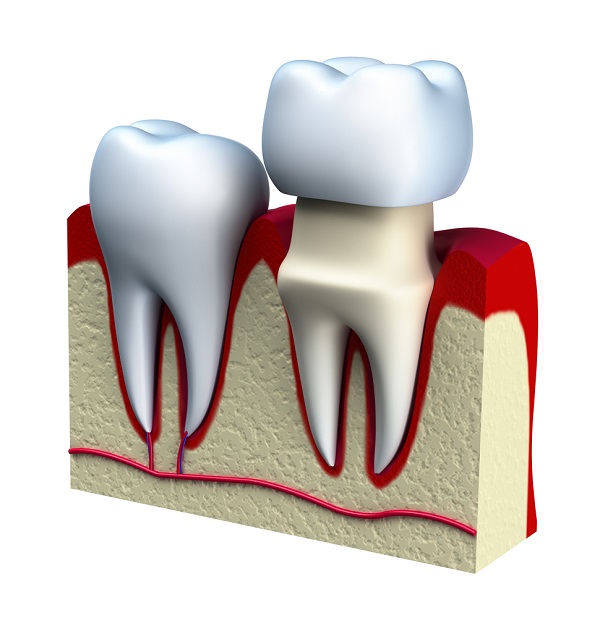 One of the most common dental procedures used in general dentistry is the installation of crowns. Over time, teeth may crack, chip, or decay, resulting in alterations in the exterior structure of the tooth. Such structural changes can impact not only your smile but effective chewing and talking, as well.
One of the most common dental procedures used in general dentistry is the installation of crowns. Over time, teeth may crack, chip, or decay, resulting in alterations in the exterior structure of the tooth. Such structural changes can impact not only your smile but effective chewing and talking, as well.
This issue can be corrected with the use of dental crowns. Crowns are molded artificial material that is affixed to the healthy portion of the tooth, thereby restoring it to its original size, shape, and function.
Traditional Crowns
The installation of traditional dental crowns requires at least two visits to your dentist. First, your dentist will remove any broken, decayed, or weakened area of the tooth. Then, an impression – or mold – of your teeth will be created by biting into a sort of putty. This impression will be sent to a laboratory where the crown will be created.
Typically, this portion of the procedure will take around two weeks. The traditional crown will be formed from either porcelain or ceramic and can be reinforced with metal. Metal strengthens the crown and easily integrates with your natural tooth.
However, while you wait for this part of the process to be completed, your dentist will likely place a temporary crown made of resin onto the damaged tooth. These temporary crowns rarely fit correctly and are prone to falling off before your next appointment. This can result in injury to the neighboring teeth or gums and leaves you with an unappealing, shaved-down tooth with limited functioning ability.
CAD/CAM Technology
With same-day dental crown procedures, a technology known as CAD/CAM, or computer-aided design and computer-aided manufacturing, significantly accelerates the process. First, 3D imaging is used to produce images of your mouth and teeth. From these results, a dental professional will use CAD software to design the crown.
The same-day crown is milled from a block of ceramic, and thanks to the accuracy of the CAD/CAM technology, the fit is typically perfect. The milling process can usually be completed in less than an hour while you remain in the office. This allows the entire procedure to be concluded in one visit.
However, faster may not necessarily be better. Let’s examine the pros and cons of each treatment.
Comparing Traditional and Same-Day Crowns
Same-Day Crowns
Pros:
- Completed in one visit
- Better fit
- Uses state-of-the-art CAD/CAM technology
- Prevents injury
Cons:
- Less durable than traditional crowns
- Fractures or damage to the tooth beneath the gums may go undetected
Traditional Crowns
Pros:
- More durable
- Sturdier materials
Cons:
- Takes longer/more than one visit
- Use of temporary resin crowns, which can result in injury
- May not fit as well
- Use of putty impressions
Typically, the cost of both traditional crowns and same-day crowns is comparable. Yet, because repeat visits are necessary for creating and installing traditional crowns, this may mean having to take more time off work, and arranging for childcare, and can affect money spent on commute.
However, because same-day crowns are less durable and may need repairs or replacements if not properly cared for, this may also result in repeat visits further down the line.
If you need a dental crown and are unsure which method is right for you, contact your Denver dentist at Spectrum Dental today and you will soon be on your way to a better, healthier smile.







